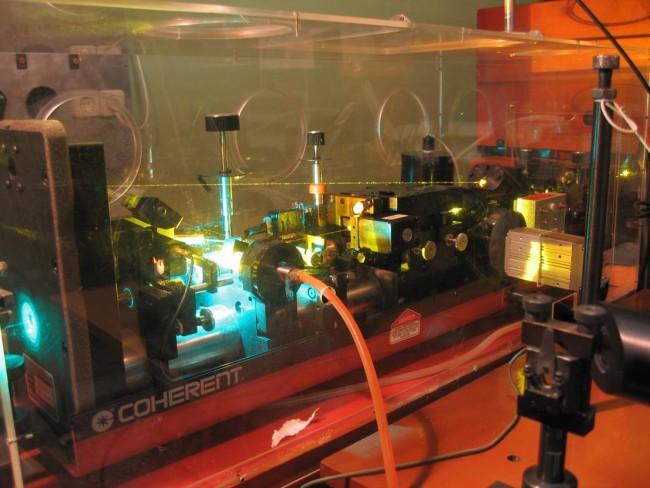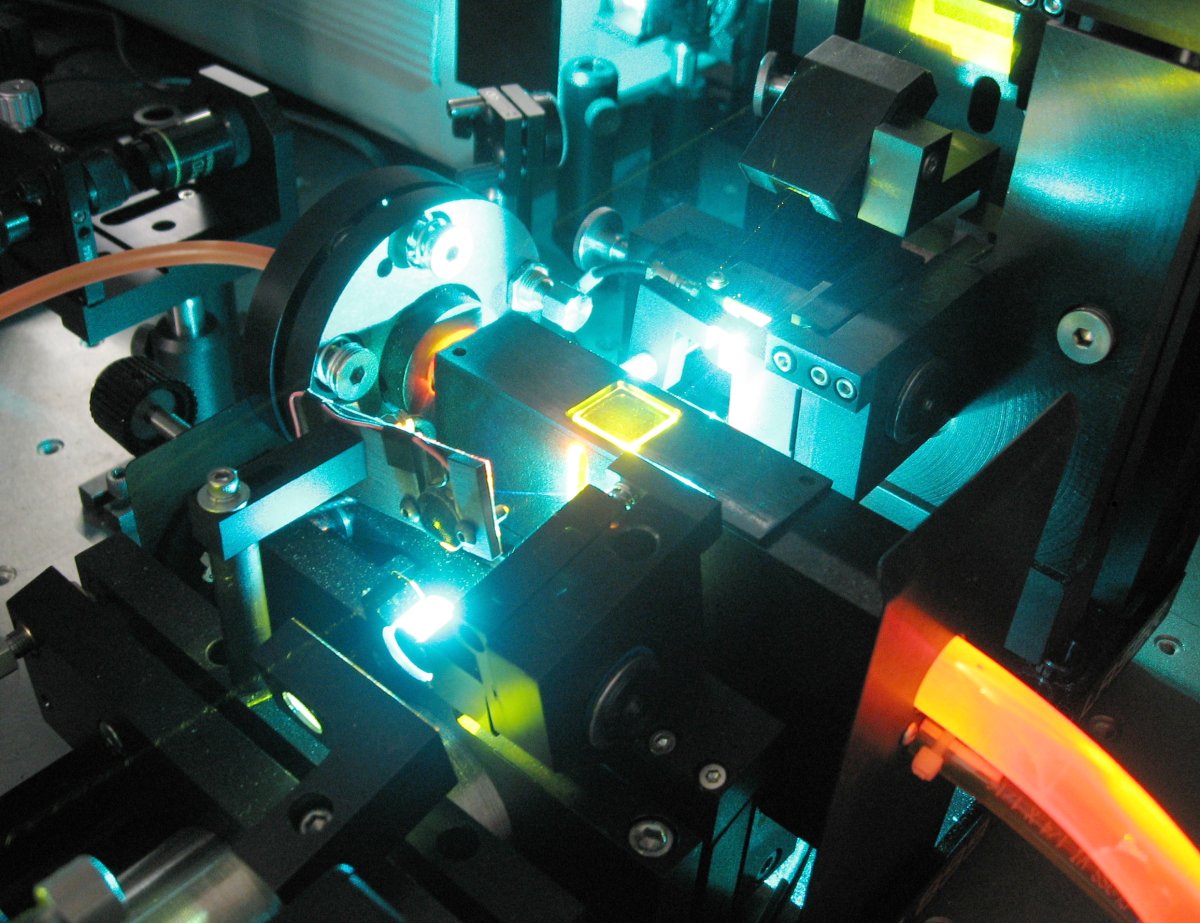
Mathematics in Bonn covers all research fields by international renowned institutes. They share a broad vision of mathematics. At its center is the classical core, i.e. the mathematics of the famous and fertile conjectures, with its surprising new connections and its deep symbiosis with theoretical physics. Beyond this core, mathematics drives and is driven by, the trend towards quantitative modeling in natural and social sciences. It is permanently assimilating and deepening concepts and thereby rapidly expanding. In this way students and scientists profit from the close connection between high ranked research, application, and teaching of mathematics at Bonn.

University Bonn: Physics . . .
is the study of the material world. Its historical mission was to push the boundaries of superlatives: the smallest subatomic particle, the quickest time interval, the most precise measurement, the most perplexing of unexplained phenomena. In the 21st century, these challenges are augmented with a need to understand how particles interact under extreme conditions or complex situations. For instance, we seek to fulfill the promise of nanotechnology, quantum computing, computational simulation, and biophysical understanding.

University Stuttgart:
What is now Universität Stuttgart was founded in 1829, and celebrated its 175th anniversary in 2004. Because of the increasing importance of the technical sciences and the associated studies of the students, from 1876 the university was known as the Technical College. This was awarded the promotional rights for the technical disciplines in 1900. The development of the courses of study at the Technical College of Stuttgart led to its renaming in 1967 as the present-day "Universität Stuttgart".

Spectroscopy (UV/VIS/IR Absorption and Fluorescence), Design and Application of Fibre optical Sensors for in-vivo and in-vitro Monitoring, Photodynamic Therapy (PDT), Software and Application Programming
The experimental research program at this time are closely coordinated with the theoretical program in order to minimize expensive short-term experimental work which can be simulated by numerical techniques. Areas of experimental interest include laser-plasma, laser-electron beam and laser-matter interactions, thermonuclear fusion, electromagnetic wave generation, the generation of intense electron and ion beams, large area plasma processing sources, advanced accelerator development, inductive energy storage, high-frequency microwave processing of advanced ceramic and metallic materials, electromagnetic rail guns, laboratory simulation of space plasma phenomena, and in-situ and remote sensing space plasma measurements.

Dye Lasers:
Dye lasers use an organic dye as the gain medium. The wide gain spectrum of available dyes allows these lasers to be highly tunable, or to produce very short-duration pulses (on the order of a few femtoseconds). Although these tunable lasers are mainly known in their liquid form, researchers have also demonstrated narrow-linewidth tunable emission in dispersive oscillator configurations incorporating solid-state dye gain media. In their most prevalent form these solid state dye lasers use dye-doped polymers as laser media.
Dye lasers use an organic dye as the gain medium. The wide gain spectrum of available dyes allows these lasers to be highly tunable, or to produce very short-duration pulses (on the order of a few femtoseconds). Although these tunable lasers are mainly known in their liquid form, researchers have also demonstrated narrow-linewidth tunable emission in dispersive oscillator configurations incorporating solid-state dye gain media. In their most prevalent form these solid state dye lasers use dye-doped polymers as laser media.

Wie von einem anderen Stern präsentiert sich das Raumfahrtzentrum Baden-Württemberg (RZBW) auf dem Uni Campus am Pfaffenwaldring, das am 26. Oktober 2011 offiziell eröffnet wurde. Der futuristisch anmutende dreistöckige Neubau erstreckt sich über 60 Meter, ist schwungvoll gebogen wie eine Banane, komplett mit einer metallischen Außenhaut ummantelt und die Forschungsheimat für über 150 Wissenschaftler und Ingenieure der Uni Stuttgart. In seinem Innenleben dreht sich alles um Raumfahrtsysteme, Raumtransporttechnologie, Satelliteninstrumentenentwicklung, Astronautik, Flugzeugastronomie und Weltraumphysik - geforscht und entwickelt wird in enger Kooperation mit den anderen Uni-Instituten im Bereich der Luft- und Raumfahrt sowie internationalen Partnern aus Industrie, Wirtschaft und außeruniversitären Forschungseinrichtungen.

